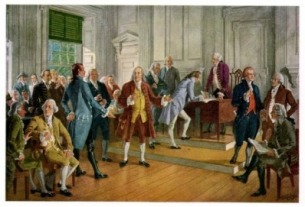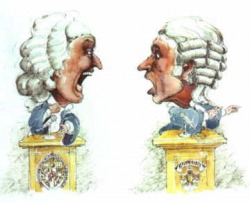The Three-Fifths Compromise
The Reaction: The Question of Population
The Great Compromise was formed. The basis of the legislative branch of the United States' government had been set down, and from this foundation the delegates needed to build a more solid structure.
- The House of Representatives' members would be chosen to represent a certain number of people from a state. This way each citizen of the United States would have some power in the legislature.
- The delegates knew this. What they needed an answer to was how they were going to proportion the population to representatives.
- Some wanted "the proportion of suffrage in the 1st branch [to] be according to the respective numbers of free inhabitants...otherwise a few large States will rule the rest. The House of Lords in England...had certain particular rights under the Constitution, and hence they have an equal vote with the House of Commons that they may be able to defend their rights."
- Other delegates proposed similar ideas.
- The strangest was Mr. Rutlidge's: he "proposed that the proportion of suffrage in the 1st branch should be according to the quotas of contribution." (Quotas of contribution meaning wealth.)
- Rutlidge's suggestion seemed like a contradiction to the American values. Hadn't the states just fought for their freedom against a country that was divided by wealth? If the representatives were proportioned through wealth, the House would become aristocratic in nature. But we digress.
- Eventually it was decided that in the Senate: each state would have two votes.
- In the House each representative was the equivalent of 40,000 people.
However, this didn't solve all of the problems with proportioning the population.
- The issue now were the slaves.
- The majority of United States citizens did not see slaves as people, and instead as property.
- However, the southern states, whose slave population was much higher than the northern states', wanted their slaves to count towards their total population.
- This would give them more power in Congress. It was merely a political strategy for the southerners to have their slaves count in representation.
- Of course the southern states' wishes were controversial. The north argued "Why then [should] the blacks, who were property in the South, be in the rule of representation more than the cattle & horses of the North[?]"
- Through almost endless debate, an agreement----a compromise----was finally formed.
- The total slave population of the states would count for three-fifths of the total number for taxation, and by extent representation, purposes.
- Eleven out of thirteen states agreed to this and the three-fifths clause was added to the Constitution.


